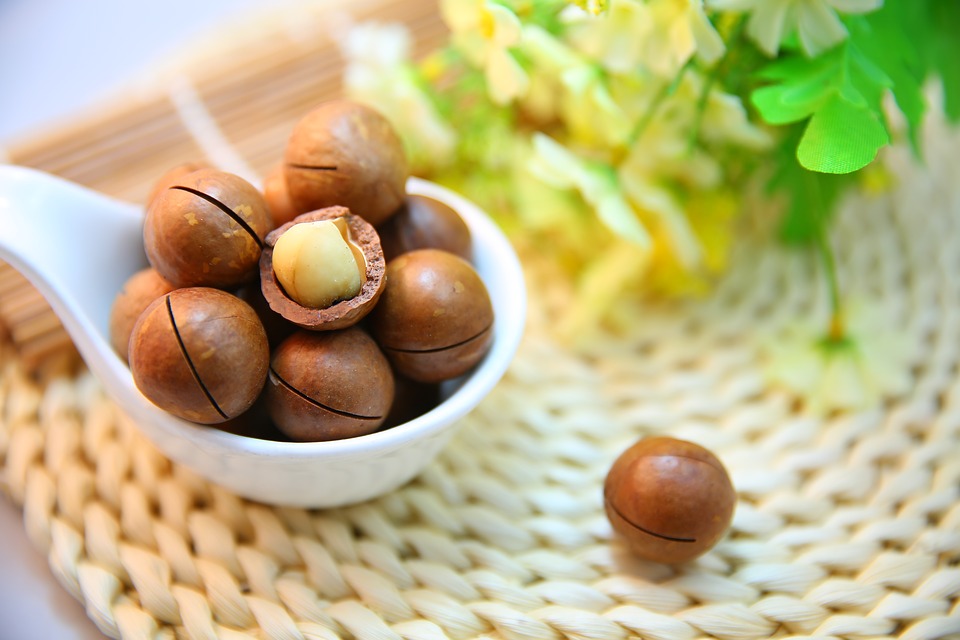Herbs and Spices - Macadamia

Macadamia
Macadamia is a genus of four species of trees indigenous to Australia, and constituting part of the plant family Proteaceae.[1][2] They are native to north eastern New South Wales and central and south eastern Queensland. Three species of the genus are commercially important for their fruit, the macadamia nut /ˌmækəˈdeɪmiə/ (or simply macadamia), with a total global production of 160,000 tonnes (180,000 short tons) in 2015.[3] Other names include Queensland nut, bush nut, maroochi nut, bauple nut, and Hawaii nut.[4] In Australian Aboriginal languages, the fruit is known by names such as bauple, gyndl, jindilli,[4] and boombera. It was an important source of bushfood for the Aboriginal peoples who were the original inhabitants of the area. The nut was first commercially produced on a wide scale in Hawaii, where it was introduced in the 1880s, and for some time they were the world's largest producer.[5] South Africa has been the world's largest producer of the macadamia in the 2010s.
Benefits:
• They lower heart disease risk : Studies have found that eating tree nuts, including macadamia nuts, can lower the risk factors for heart disease.
• They improve metabolic syndrome and diabetes: may help lower the risk of metabolic syndrome or reduce its effects in people who already have it. improve glycemic control in people with type 2 diabetes.
• They may prevent cancer: Macadamia nuts contain a type of vitamin E called tocotrienols. Tocotrienols may have powerful anticancer abilities, according to some research. Contain plant compounds called flavonoids, which can fight cancer by destroying damaging free radicals in the body.
• They protect the brain: Aside from their potential ability to fight cancer, tocotrienols also have brain-protecting effects.
• They may prevent weight gain: Macadamia nuts and their oil are some of the richest sources of palmitoleic acid, a monounsaturated fat also called omega-7.
• They stave off hunger: Macadamia nuts contain protein, high amounts of beneficial fats, and fiber. Together, these nutrients can help a person feel full for longer.
Serving ways:
• Macadamia flour. Macadamia flour is an alternative gluten-free and low-carb flour option for baking.
• Macadamia milk. Macadamia milk can be easily made at home by soaking macadamia nuts and blending them together. Macadamia milk is a dairy-free milk option for baking, or as a standalone beverage.
• Macadamia nut butter. Macadamia nuts can be blended into creamy nut butter using a food processor. Add some coconut oil and honey for a healthier alternative to peanut butter.
• Macadamia oil. Macadamia nuts can be cold pressed to make macadamia oil. Macadamia nut oil has a higher smoke point than olive oil, and is a healthy oil option for baking, grilling, sauteing, or stir-frying.